This video is an introduction to intervals. In it, I tackle everything from interval quantity, quality, major/minor to diminished/ augmented. And I make sense of the question why E to Gb would be a diminished third, but E to F# is a major second. Tune in.
This is the foundation for lots more to come on these gems. They are the basic building blocks of everything – scales, triads, chords, extensions…
Intervals – Taking it Step by Step!
My Gear:
- I use Marleaux Basses and Dean Markley Strings.
- TC Electronics Pedals, cabs and amps
- Fretwrap by Gruvgear.
(Ariane Cap is an official endorser for all these fine companies.)
Thanks to Wolftrackaudio.com for audio post production.
If you’d like to study with me, click here. (Currently waiting list)
Transcript
[Intro playing: 0.00 to 0.10]
Welcome to Bass Bit #6. We are now really diving into music theory – talked a lot about the notes, a little bit about the range of the bass, and exercises to get the note names under your belt. Now, it’s really going into music theory and we’re gonna be starting with a big chapter and that’s the intervals. “Music Theory for the Bass Player” again is the book that I am following along here, and I’m just giving you a few tidbits out of it. There’s much more information in the book.
So, Intervals. Basically, intervals are distances between notes. And whenever we talk about an interval, there are two pieces of information that we need to know – we need to know the quantity (second, third, fourth, fifth, sixth, seventh, or octave), and we need to know the quality (major, minor, diminished, augmented or perfect are all the options for quality).
In the book on page 58 and page 59, there is a table that tells you everything there is to know about intervals in a 2-paged format. Intervals are small building blocks that make up chords, scales, any kind of groove, combinations of notes, melodies – they are all in their smallest unit, built of intervals. If we understand the relationship of intervals to each other, then we will have much better understanding of how a melody, a scale or a chord, etc. is built. We will also have better skills reading music because when you put a piece of music in front of somebody who has an understanding of intervals, you will be reading from one note to the next like stepping from one stepping stone to the next. There is no need to spot place every single note. By spot placing, we typically mean figuring out what each individual note is. Even though you’ll become very fast at that when you read as well, knowing intervals can really also help you read.
Basically you need to know that there are two classes of intervals – intervals that are perfect and intervals that are major or minor. If I say, “play a second”, then the correct answer to that would be, “major or minor?” Because to say play a second doesn’t define it; if I say play a 4th or a 5th or an octave, then typically what we mean is a pure or perfect octave.
So in order to go through all of these intervals just now, I’m gonna go from [playing: 2.41 to 2.43] E to F – that’s a minor second; [playing: 2.44 to 2.46] E to F# – that’s a major second. Now, F# – I could call it G flat, right? If I call it G flat, you’d have to call it some sort of a third though because E (1) – F (2) – G (3) is a third, right? And then I would figure out that [playing: 3.01 to 3.03] E to G flat is a diminished third, right? We’ll get to diminished and augmented later but I just want to really implant the idea that it’s really important how you name it and that that has consequences.
So,
- [playing: 3.15 to 3.16] E to F# – major second;
- [playing: 3.18 to 3.19] E to G – minor third;
- [playing: 3.21 to 3.22] E to G# –major third;
- [playing: 3.24 to 3.25] E to A – perfect fourth;
- [playing: 3.26 to 3.28]E to A# – augmented fourth.
Check it – it could also be a B flat, right?
- [playing: 3.33 to 3.34] E to B flat– diminished fifth;
- [playing: 3.37 to 3.38] E to B – fifth (Bass players’ best friend!);
- [playing: 3.41 to 3.43] E to C – minor six;
- [playing: 3.45 to 3.46] E to C# – major sixth;
- [playing: 3.89 to 3.49] E to D – minor seventh;
- [playing: 3.51 to 3.54] E to D# – I have to say D#. If I say E flat, it’s a diminished octave. E to D# [playing 3.59] is a major seventh;
- [playing: 4.02 to 4.03] E to E is an octave.
Interval quantity and interval quality. The quantity is the number of letters where you always count the first and the last. If I want to figure out what the interval between E and G is, I count like this – E, F, G. It’s some sort of a third. You put that down on paper and you don’t change it. Then you figure out the half steps: well E to F, that’s a half step; and then one half step; and then F to F#; and then F# to G. So then you’ll look up on your list or you know by heart that E to G are three minor half steps equalling a minor third – three minor seconds equal a minor third.
Maybe you don’t have an E to G; maybe you have an E flat to G. Well, if you have an E flat to G, you still start out the same way – you count the bare bones letter name: E (1), F (2), G (3) – you put down third and then again we figure out: well, with E flat, I gained a half step. So it’s now four half steps and that would make it a major third. Alright? I could also create a major third by going from E to G#. That way, I make the top note a half step higher, right? Then that gives me that extra half step. I can make the top note higher to make the interval bigger, or I can make the bottom note lower – E to G, E to G, E flat to G. Interval, the distance between my two hands got bigger. Alright?
So, practice going up and down your bass. Just keep saying, keep repeating the sequence of intervals. What’s important – fourths and fifths and octaves and the prime or unison (to be complete), which is the same note – they don’t have major or minor.
Fourths, fifths, octaves, prime and unison do not have major or minor. If I say, “play me a fourth”, “play me a fifth”, everybody knows what you mean. If you say, “play me a sixth”, major or minor?
One more thing.
- Intervals that are minor, you make them bigger by a half step, they become major.
- Intervals that are major, you make them smaller by a half-step, they become minor.
- Intervals that are perfect, you make them bigger by a half-step, they become augmented.
- Intervals that are perfect you make them smaller by a half step, they become diminished.
Now I can take a minor third, or a minor sixth, or a minor seventh and make that smaller even, then they become diminished. If I make it even smaller, they become double diminished. Mind benders.
So, if I have a, let’s say, that’s my interval and let’s say that’s a major third, I add a half step, it becomes an augmented third. Right? De facto an augmented third is a fourth, but it would be named differently. C to F, that’s a fourth but if I say C to E#, then that’s a third. Why? C, D, E – alright, that’s a third.
Let’s say I have a major third and I add a half step, now it’s an augmented third. Right? Now I take that half step away, it becomes a major third again. I can also take that half step away by bringing the bottom up. Right? That’s possible, so work with your hands. If you have somebody ask you, “What’s an interval?” Use your hands, it really helps. Use your hands for the quality; the quantity, you will determine by counting the letter names and always count the first one with it.
So let’s say we have a major third and I make it bigger by a half step, then it’s now an augmented third. I can do that by sharpening the top, I can also do that by flattening the bottom. The distance between my two hands becomes bigger. So once it’s augmented I can do that one more time by doing double augmented. And triple augmented, we don’t do that; that’s just too out. But double augmented does occur at times.
So, now we have that. Now let’s go the other way. So, double augmented minus a half step becomes augmented; minus a half step becomes major; minus a half step becomes minor; minus a half step becomes diminished; minus one more time becomes double diminished.
So you can create really out there intervals that aren’t very usable but again they’ll help you think and understand this concept.
If I have a perfect interval and I add a half step, I make the perfect interval augmented, double augmented and so forth. Or I make it augmented by flattening the bottom, flattening the bottom twice, becomes double augmented. Augmented, one smaller is perfect; one smaller is diminished, double diminished, triple diminished.
In the upcoming bass bits I’m going to be going through every single interval, and I will talk about the best fingerings, ways to finger them on the same string or on different strings and some mnemonics to help you remember the fingerings and the concept. Some intervals are easier to count from the bottom up, some are easier to count from the top down. And for most of them I have some really great short cuts so you don’t have to count at all. I also will be playing you the hip grooves that are in the book. I built some grooves out of intervals so we’ll be doing some playing and you’ll be invited to jam and do the same with the intervals. I’ll be talking a little bit about how they sound and about what happens if you keep repeating the interval over and over and over because in a lot of cases that creates some really cool stuff.
Thanks so much for watching. I’ll see you next time.



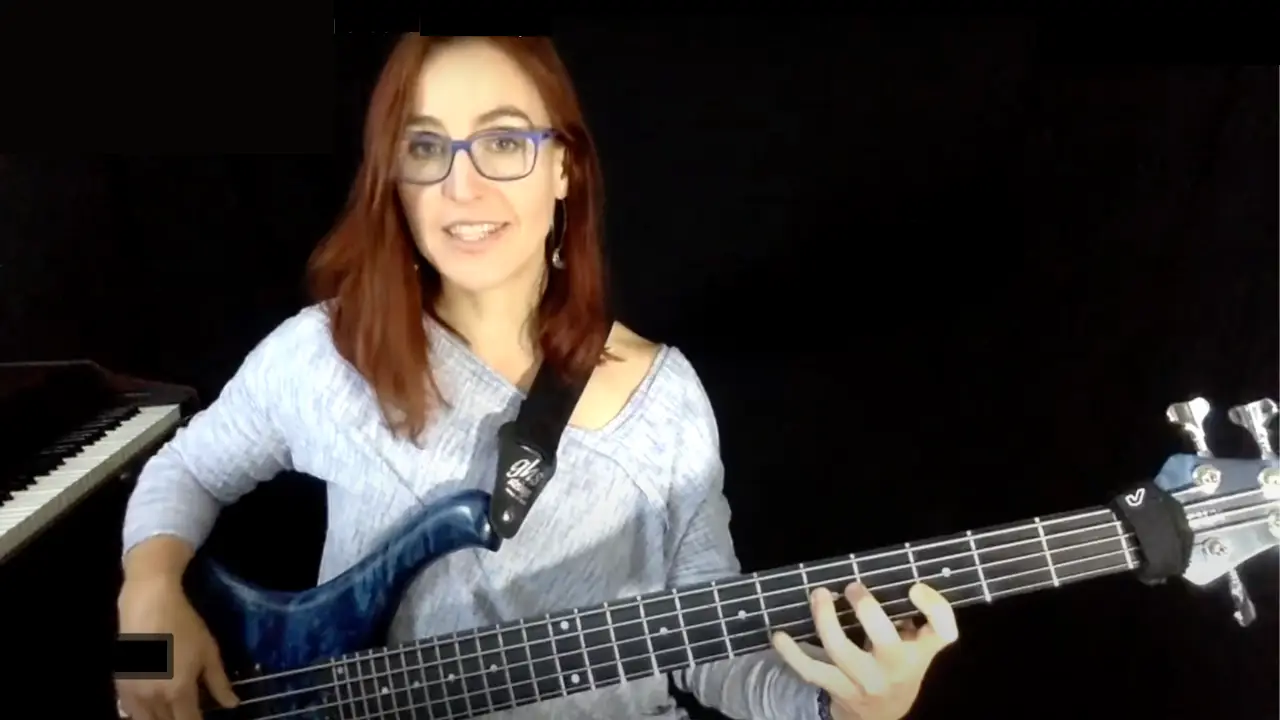

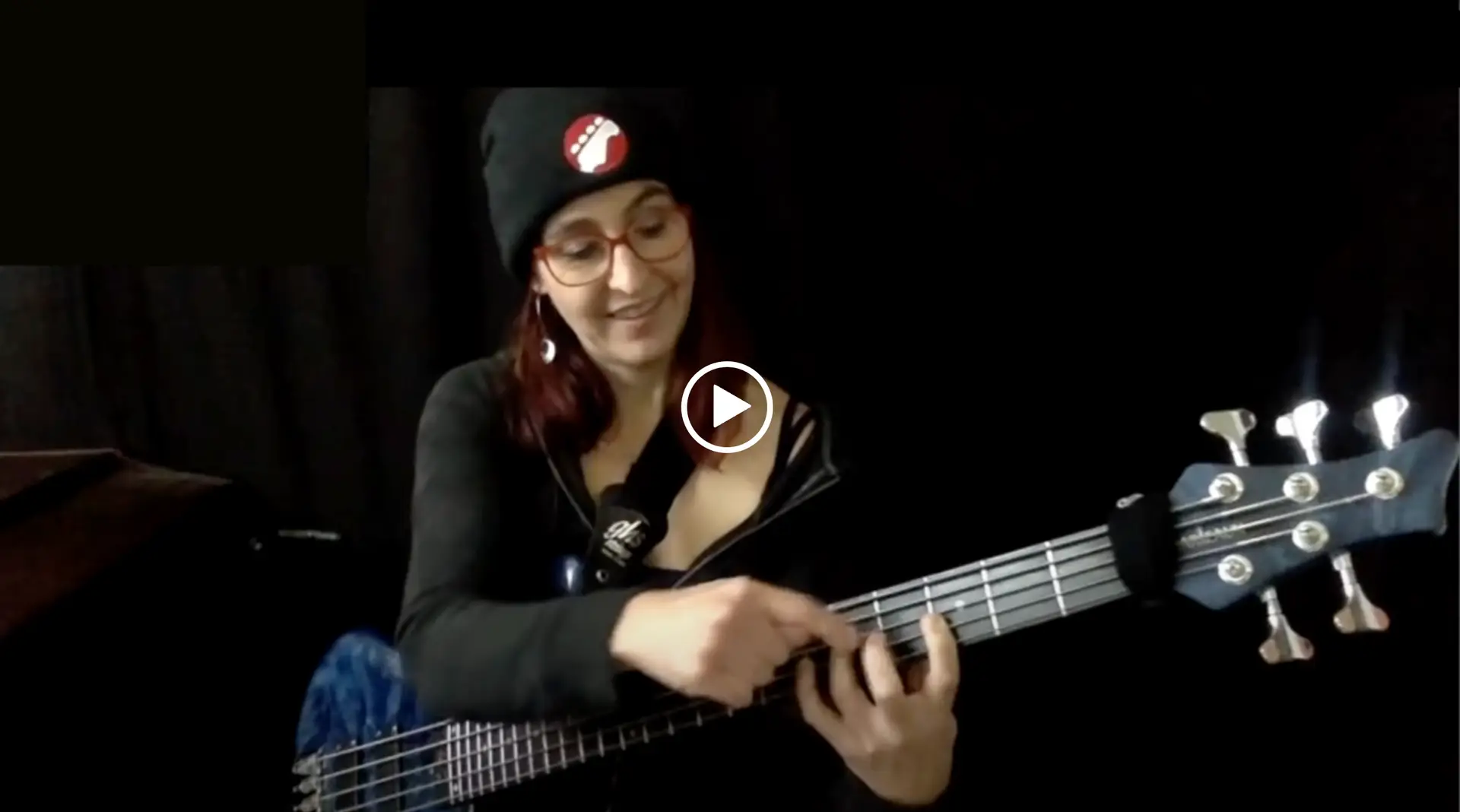
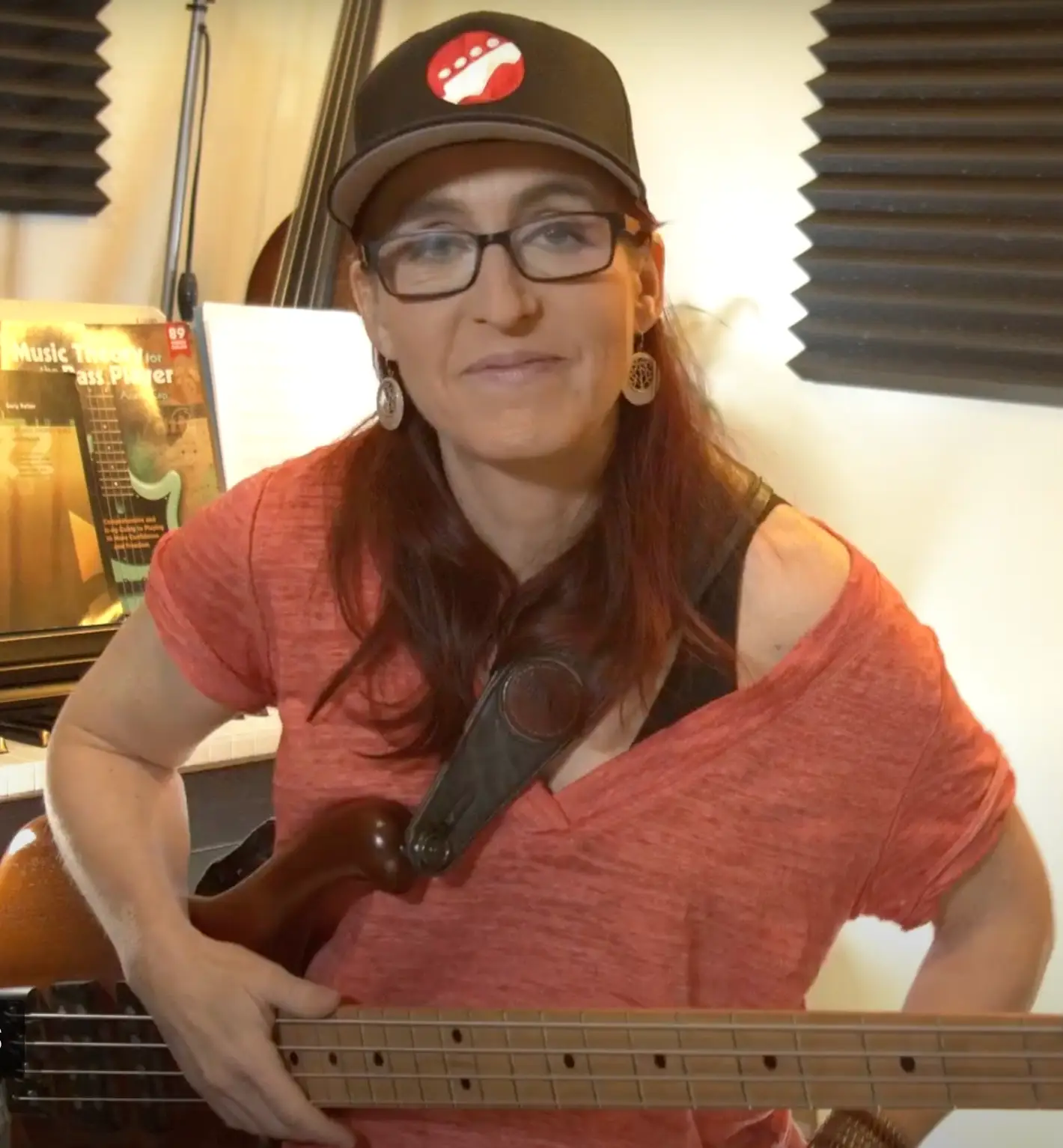
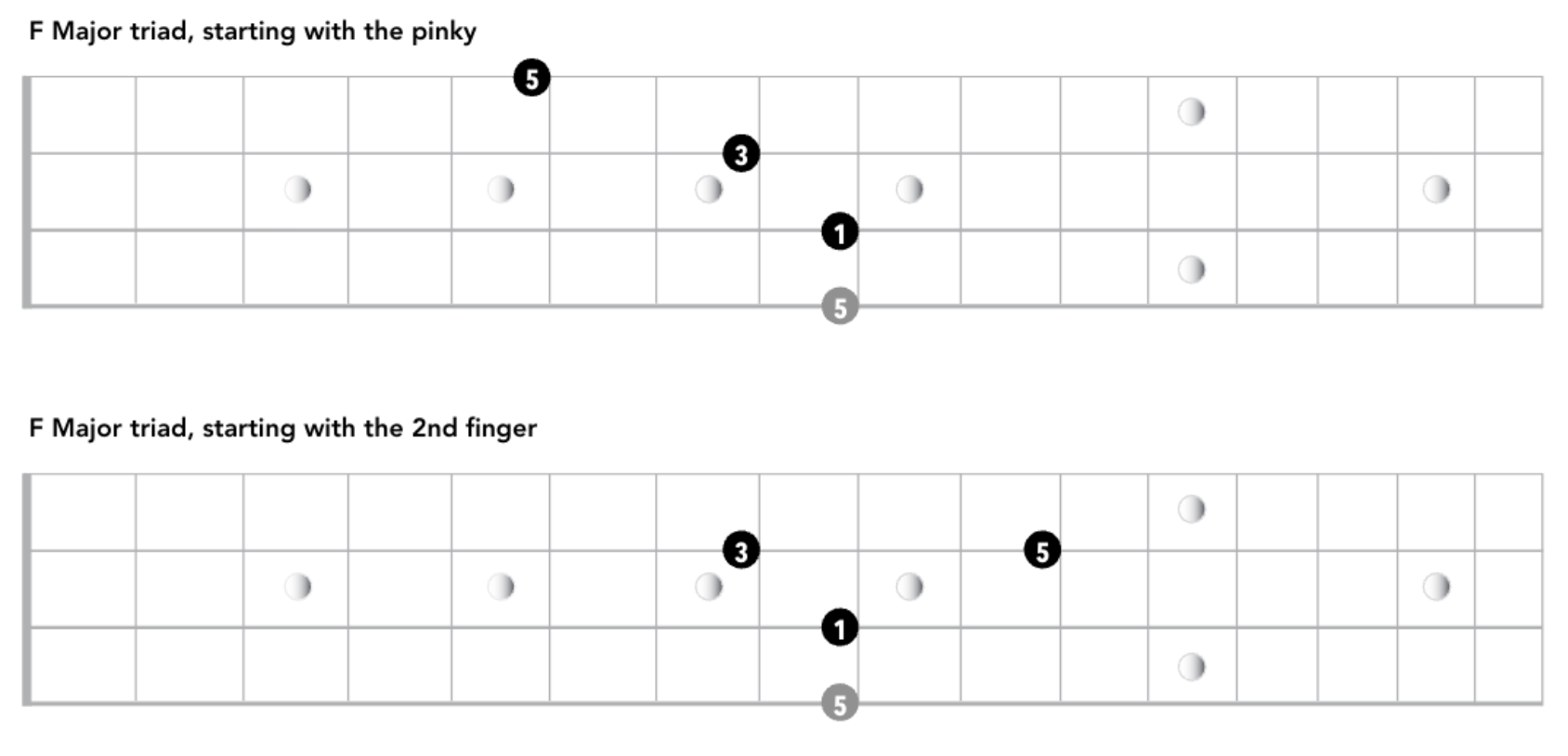
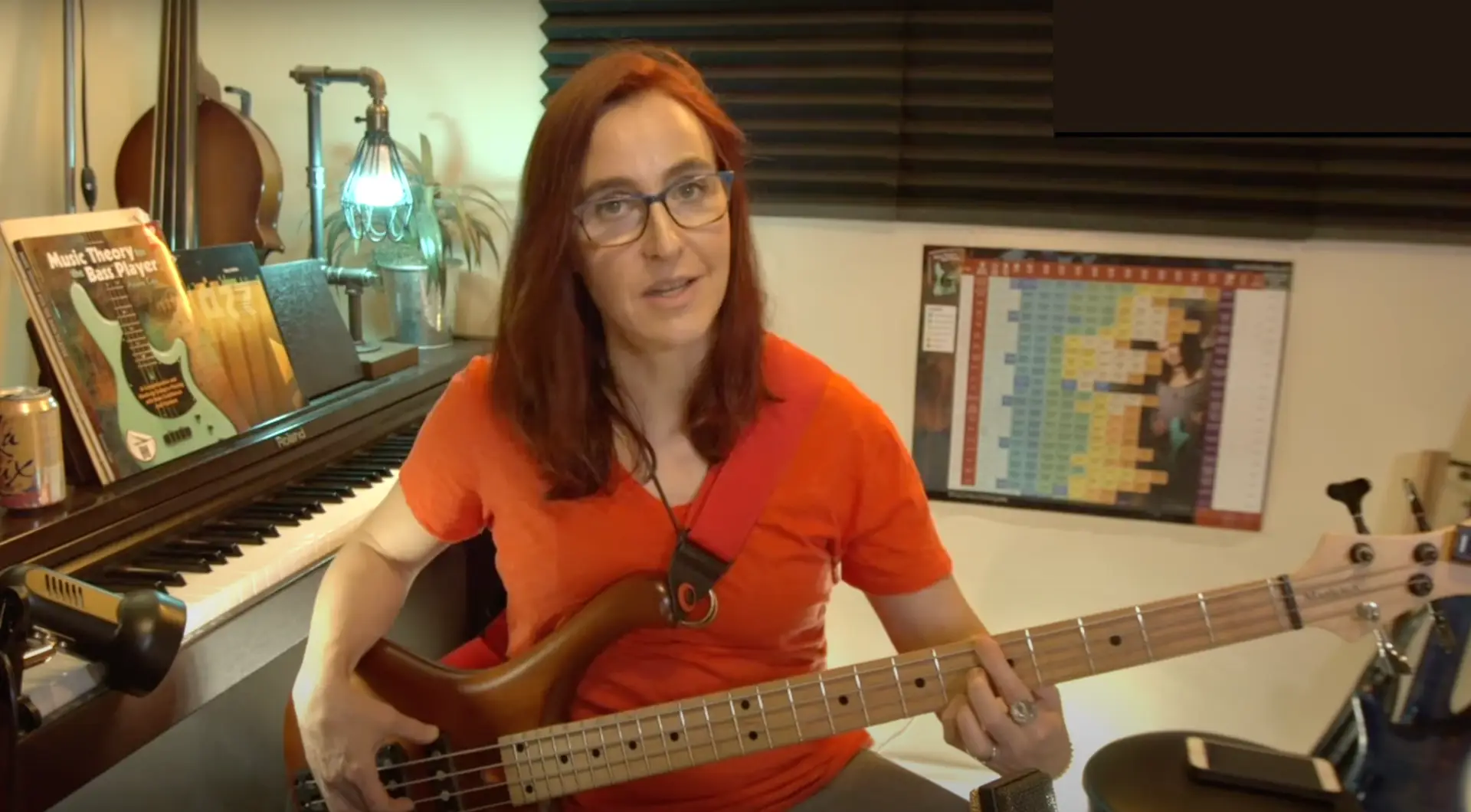
7 Replies to “Intervals – Ultimate Introduction! (BB#6)”
hi Ariane, das ist jetzt mal wirklich toll erklärt. Klasse. Falls du nicht weisst, wer ich bin: wir trafen uns auf der MM Frankfurt, als ich mit Bobby Vega unterwegs war….
Hanno! Klar erinnere ich mich. Cool! FF dieses Jahr? Dann sehen wir uns 🙂
I don’t understand two answers to Test Your Understanding #3 h):
1. D to G ascending:
Quantity: DEFG equals Fourth
Quality: 5 half steps
Looks like the answer should be a Perfect Fourth, but the answer page says Perfect Fifth. Please explain.
2. D superscript x (I don’t know what this is signifying) to F# ascending:
Quantity: DEF equals Third
Quality: 4 half steps
Looks like the answer should be a Major Third, but the answer page says Diminished Fourth.
Please explain.
(I hunted all over for the meaning of D superscript x, but could find nothing)
Thanks.
Hi Bob,
1. That is a typo in the answers section. You are correct, D to G ascending is a perfect fourth.
2. The x is explained on page 4 on the bottom. Try again. Then answer Dx-F# as well as Dx-G# (which is erroneously what the answer section lists, in any event, that answer is correct and you can figure out Dx-F# as well.
Thanks. Missed page four. Understand ascending to G# is a diminished 4th. Is ascending to F# a diminished 3rd because I’m subtracting two half steps from the major third?
Yes, that’s it!
Outstanding. Thanks for all your patience. I’m finding the book and your website very informative and challenging.